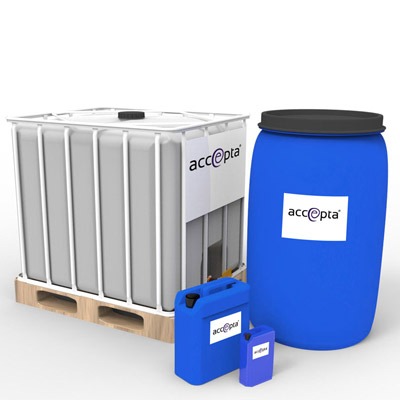The Role of Foam Control in Wastewater Treatment: Finest Techniques and Approaches
The Role of Foam Control in Wastewater Treatment: Finest Techniques and Approaches
Blog Article
A Comprehensive Overview to Carrying Out Foam Control Solutions in Your Procedures
Reliable foam control is a critical aspect of functional effectiveness that usually goes forgotten. Recognizing the details of foam generation can significantly influence both productivity and item high quality. By examining vital aspects such as application compatibility and workers training, companies can optimize their foam monitoring initiatives.
Understanding Foam Difficulties
Foam difficulties are a significant problem throughout numerous markets, affecting functional effectiveness and product quality. The formation of extreme foam can prevent processes such as mixing, transport, and storage, causing boosted downtime and waste. In industries like food and beverage, pharmaceuticals, and petrochemicals, foam can hinder assembly line, creating product disparities and contamination threats.
Moreover, foam can obstruct equipment capability, bring about expensive repair work and maintenance. In wastewater treatment, foam can interrupt clarifier operations, resulting in lower therapy performance and regulative compliance issues.
Comprehending the underlying reasons for foam generation is important for efficient management. Factors such as surfactants, temperature level fluctuations, and frustration degrees can all add to foam production. Determining these aspects enables sectors to implement targeted techniques that lessen foam formation while keeping item integrity.
Kinds of Foam Control Solutions

Mechanical solutions include using tools such as foam skimmers or defoamers. These tools physically remove foam from the surface of liquids, thereby protecting against overflow and preserving ideal levels in storage tanks and activators. Chemical options, on the various other hand, include the application of defoaming agents-- materials that interrupt the foam framework, bring about its collapse. These representatives can be silicone-based, natural, or liquid, each offering distinctive benefits depending upon the application atmosphere.
Last but not least, functional approaches concentrate on process adjustments. This may involve changing devices specifications, such as temperature level and stress, or altering the circulation rates of fluids to decrease foam generation. In addition, executing great housekeeping practices can also reduce foam formation by minimizing contaminants that contribute to foam security.
Selecting the suitable foam control solution involves examining the particular demands of the procedure, consisting of the type of procedure, the characteristics of the materials entailed, and security considerations.
Selecting the Right Products
Choosing the right foam control items calls for a complete understanding of the specific application and its one-of-a-kind difficulties. Factors such as the kind of foam, the atmosphere in which it takes place, and the desired end result all play pivotal roles in product choice. Foam Control. In markets like food handling, it is essential to pick food-grade defoamers that conform with security policies while properly taking care of foam.
Furthermore, think about the thickness of the fluid where the foam trouble exists. Some products are created for low-viscosity applications, while others are tailored for thicker liquids. Compatibility with existing processes Source is one more crucial element; the picked foam control agents ought to incorporate effortlessly without interfering with overall operations.
An additional important factor is the method of application. Some items might call for dilution, while others can be applied straight. Examining the convenience of usage and the called for dose can give understandings right into the product's efficiency and cost-effectiveness.
Execution Strategies
Successful execution approaches for foam control options require a methodical approach that aligns item option with operational demands. The very first step includes a detailed analysis of the procedures where foam occurs, determining particular locations that require treatment. By engaging cross-functional groups, including high quality, design, and production guarantee, organizations can gather insights that notify the option of one of the most reliable foam control products.
Following, it is essential to develop clear purposes for foam decrease, making certain that these objectives are attainable and quantifiable. This may involve specifying appropriate foam levels and the timelines for application. Educating employees on the properties and application methods of chosen foam control representatives is similarly essential, as appropriate use is crucial for optimal outcomes.
Furthermore, incorporating foam control services right into existing process needs careful preparation. Inevitably, a well-structured method will certainly boost operational performance while properly taking care of foam-related difficulties.
Tracking and Evaluating Efficiency
Tracking and evaluating the efficiency of foam control options is crucial for making sure that implemented approaches produce the preferred outcomes. This procedure includes methodical data collection and analysis to analyze the performance of foam control representatives and methods. Trick performance signs (KPIs) need to be developed prior to visit their website execution, enabling a clear baseline against which to gauge progress.

Examining effectiveness likewise calls for regular evaluations of foam control treatments and representative effectiveness. This can be accomplished via sampling and testing, allowing drivers to identify click to read if existing remedies are meeting operational demands. It is critical to get comments from team participants who communicate with these systems daily, as their insights can reveal functional subtleties that quantitative information may forget.

Ultimately, an organized monitoring and examination framework helps recognize needed changes, making certain that foam control options stay effective, cost-effective, and straightened with business goals.
Final Thought
In verdict, efficient foam control solutions are vital for maximizing functional efficiency and maintaining item high quality. A comprehensive understanding of foam difficulties, integrated with the option of ideal products and implementation techniques, assists in the effective monitoring of foam generation.
Implementing excellent housekeeping practices can likewise mitigate foam development by minimizing pollutants that add to foam security.
Choosing the ideal foam control products needs a thorough understanding of the specific application and its unique challenges (Foam Control).Effective implementation techniques for foam control services call for a systematic strategy that aligns product option with functional demands.In conclusion, efficient foam control solutions are important for optimizing functional efficiency and keeping product top quality. A detailed understanding of foam challenges, integrated with the choice of appropriate products and execution approaches, facilitates the successful monitoring of foam generation
Report this page